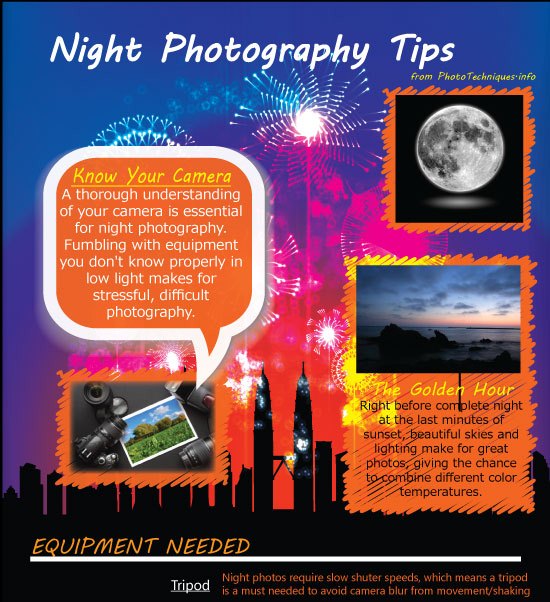What Every Professional Photographer Should Find Out About Illumination
What Every Professional Photographer Should Find Out About Illumination
Blog Article
Written By- https://squareblogs.net/sarai0marcus/how-to-pick-the-right-electronic-camera-for-your-digital-photography-needs
As a professional photographer, you recognize that lights can make or break your images. Recognizing the subtleties of both natural and fabricated light is crucial for capturing the state of mind and quality you go for in your job. Whether you're chasing after the best golden hour glow or tweak your man-made setups, mastering these components can raise your digital photography dramatically. Yet there are common mistakes that lots of forget, and recognizing them can change your method to every shoot. Let's explore what you could be missing out on and exactly how it can affect your outcomes.
Recognizing All-natural Light
Understanding natural light is critical for any professional photographer seeking to enhance their job. It's the foundation of terrific digital photography, affecting mood, tone, and clearness. When you shoot outdoors, focus on the time of day. The gold hour-- shortly after daybreak and before sunset-- supplies soft, warm light that can transform normal scenes into sensational images.
Don't undervalue the power of cloudy days. Cloud cover diffuses sunlight, developing a soft, even light that's excellent for portraits and macro photography. You'll locate shades appear this kind of lights without rough shadows.
Placing matters, also. Always consider your topic's positioning to the source of light. If the sun's behind your topic, you may end up with a silhouette, which can be remarkable yet mightn't be what you want. Alternatively, straight sunlight can develop unflattering shadows.
Trying out click for info ; in some cases, altering your perspective can generate remarkable results. Usage https://blogfreely.net/julio21darnell/exactly-how-to-build-a-photography-portfolio-that-attracts-attention , like water or sand, to jump light onto your subject, including dimension.
Learning Artificial Light
Understanding fabricated light is vital for professional photographers that wish to take their skills to the next level. Whether you're utilizing speedlights, workshop strobes, or constant lights, comprehending how to manipulate these resources can substantially enhance your photos.
Beginning by https://www.techradar.com/how-to/photography-video-capture/cameras/5-essential-photography-filters-and-why-you-can-t-live-without-them-1320801 with the basics of light top quality, direction, and shade temperature. Trying out various modifiers like softboxes, umbrellas, or grids to manage the softness or cruelty of the light.
You'll discover that soft light usually creates lovely results, while harsher light can include dramatization and deepness. Don't shy away from darkness; they can enhance the three-dimensionality of your topics.
Pay close attention to the placement of your lights. A light located also close to your topic can produce uncomplimentary outcomes, while too far can result in an absence of information. Make use of a light meter or your video camera's histogram to guarantee you're subjecting properly.
Lastly, bear in mind that artificial light can be mixed with ambient light for innovative impacts. Balancing these resources may take practice, once you master it, your photography will really radiate.
Methods for Different Scenarios
When you step into different shooting situations, adapting your lights methods is important for capturing the best images. For outside pictures, make use of the gold hour-- morning or late afternoon light-- to soften shadows and boost complexion.
If it's a rough noontime sunlight, think about utilizing a reflector to jump light back onto your subject or look for shaded locations for a much more even direct exposure.
In low-light scenarios, like interior occasions, enhance your ISO and make use of a wide aperture to let in more light. A tripod can help get rid of electronic camera shake, permitting longer exposures without blurring.
If you're shooting at night, try out off-camera flash to create vibrant lights and deepness in your photos.
For item digital photography, utilize diffused lighting to stay clear of harsh reflections. Softboxes or light outdoors tents can aid achieve this effect.
When photographing landscapes, consider the instructions of light and time of day, as it can significantly alter the mood of your shot.
Always prepare to readjust your setups and placing based upon the scenario, as flexibility is key to understanding lights in photography.
Verdict
To conclude, mastering illumination is essential to raising your photography abilities. Welcome natural light's beauty throughout golden hour, and do not avoid experimenting with fabricated light strategies. By adapting your strategy to various scenarios, you'll capture sensational photos that reverberate with feeling and clearness. Keep in mind, the ideal lights can change a regular shot into something remarkable, so keep practicing and fine-tuning your understanding of both all-natural and synthetic light. Satisfied shooting!
